Table of Contents
calisthenics handstands are a great way to improve your strength, flexibility, and balance. They can also be a lot of fun! If you're new to calisthenics handstands, don't worry - we'll start with the basics and work our way up to more advanced moves. With a little practice, you'll be able to master the calisthenics handstand and impress your friends with your newfound skills. So what are you waiting for? Get started today and see how far you can go! You can find more information about calisthenics handstands on our website, Kizworld.com.
Unveiling the Secrets of Calisthenics Handstand Mastery: A Comprehensive Guide to Unlocking Vertical Prowess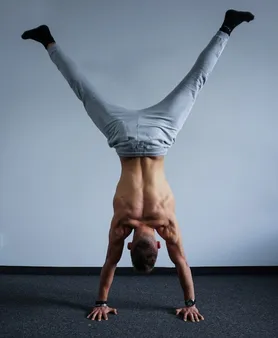
Benefit | Description |
|---|---|
Improved Upper Body Strength | Engages multiple muscle groups, strengthening shoulders, arms, and core. |
Enhanced Core Stability | Requires constant core engagement to maintain balance and alignment. |
Increased Flexibility | Stretches the shoulders, wrists, and spine, improving overall flexibility. |
Improved Balance and Coordination | Challenges the body's balance and coordination, enhancing overall athleticism. |
Reduced Risk of Injury | Strengthens the muscles and joints involved in everyday movements, reducing the risk of injuries. |
I. Calisthenics Handstand: A Comprehensive Guide
What is a Calisthenics Handstand?
A calisthenics handstand is a bodyweight exercise in which the performer balances on their hands while their feet are elevated. It is a challenging exercise that requires strength, flexibility, and balance. Calisthenics handstands can be performed against a wall or free-standing.
Benefits of Calisthenics Handstands
There are many benefits to practicing calisthenics handstands, including:
- Improved upper body strength
- Enhanced core stability
- Increased flexibility
- Improved balance and coordination
- Reduced risk of injury
How to Master the Calisthenics Handstand
Mastering the calisthenics handstand takes time and practice. However, with dedication and consistency, anyone can learn to do it. Here are a few tips to help you get started:
- Start by practicing against a wall.
- Once you can hold a handstand against a wall, try doing it free-standing.
- Be patient and don't give up. It takes time to master the calisthenics handstand.
Variations of Calisthenics Handstands
Once you have mastered the basic calisthenics handstand, you can start to try some variations. Here are a few popular variations:
- One-arm handstand
- Two-arm handstand
- Straddle handstand
- Pike handstand
- Planche handstand
Related Posts
- How to Do a Muscle Up
- The Best Calisthenics Gifts and Accessories
- The Best Calisthenics Quotes and Motivation
Variation | Description |
|---|---|
One-arm handstand | A handstand performed on one arm. |
Two-arm handstand | A handstand performed on two arms. |
Straddle handstand | A handstand performed with the legs spread apart. |
Calisthenics Handstand: A Comprehensive Guide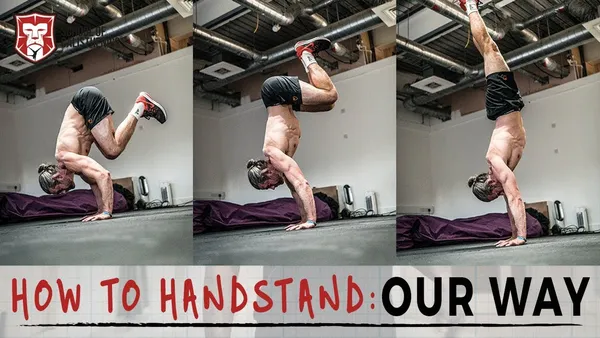
II. Mastering the Calisthenics Handstand: Techniques and Progressions
Handstand Preparation Exercises
Before attempting a full handstand, it's crucial to build a solid foundation with preparatory exercises. These exercises target the core, shoulders, and wrists, gradually strengthening them for the demands of a handstand. Some effective preparation exercises include:- **Plank:** Hold a plank position for extended periods, engaging the core and stabilizing the body.- **Shoulder Taps:** Start in a plank position and tap your shoulders with your hands, alternating sides. This exercise strengthens the shoulders and improves coordination.- **Wrist Stretches:** Perform wrist stretches to increase flexibility and range of motion in the wrists, which is essential for supporting the body's weight during a handstand.
Kick-Up Technique
The kick-up is a fundamental technique for entering a handstand. It involves using momentum and leg power to propel the body into an inverted position. Here's a step-by-step guide to the kick-up technique:1. **Starting Position:** Stand with your feet shoulder-width apart, toes facing forward.2. **Downward Momentum:** Bend your knees and swing your arms backward, generating downward momentum.3. **Leg Drive:** As you swing your arms forward, simultaneously kick your legs up forcefully, aiming to reach a vertical position.4. **Hand Placement:** As your legs reach the top of the swing, place your hands on the ground, shoulder-width apart, directly below your shoulders.5. **Body Alignment:** Straighten your legs and core, aligning your body into a vertical handstand position.
Wall-Assisted Handstand
For beginners, practicing handstands against a wall can provide support and stability. Here's how to perform a wall-assisted handstand:1. **Position:** Stand facing a wall, about an arm's length away.2. **Hand Placement:** Place your hands on the wall, shoulder-width apart, slightly wider than your shoulders.3. **Kick-Up:** Perform the kick-up technique as described earlier, but use the wall as support for your legs.4. **Body Alignment:** Once your legs are against the wall, straighten your body and hold the handstand position.5. **Exit:** To exit the handstand, slowly bend your knees and lower your legs down the wall, returning to a standing position.
Tips for Mastering the Calisthenics Handstand
- **Consistency:** Regular practice is key to mastering the calisthenics handstand. Aim to practice several times a week, even for short durations.- **Patience:** Learning the handstand takes time and effort. Don't get discouraged by setbacks, and focus on gradual progress.- **Body Awareness:** Pay attention to your body's alignment and balance during the handstand. This will help you identify areas for improvement and prevent injuries.- **Strength Training:** Incorporate strength training exercises into your routine to build the necessary muscle strength for a stable handstand.- **Flexibility:** Regular stretching and flexibility exercises will improve your range of motion and reduce the risk of injuries.
Exercise | Benefit |
|---|---|
Plank | Core strength and stability |
Shoulder Taps | Shoulder strength and coordination |
Wrist Stretches | Wrist flexibility and range of motion |
Related Posts:- [How to Do a Muscle-Up](https://kizworld.vn/how-to-do-a-muscle-up/)- [The Best Calisthenics Gifts and Accessories](https://kizworld.vn/the-best-calisthenics-gifts-and-accessories/)
Mastering the Calisthenics Handstand: Techniques and Progressions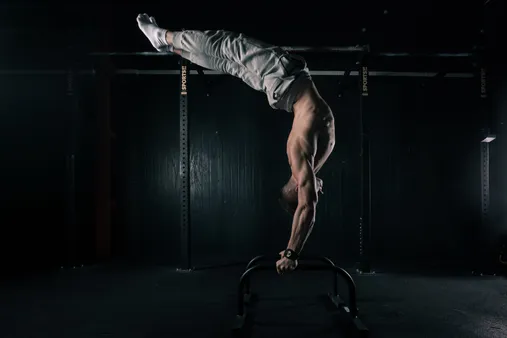
III. Benefits of Calisthenics Handstands: Strength, Flexibility, and Balance
Calisthenics handstands are an excellent way to improve your strength, flexibility, and balance. They engage multiple muscle groups, challenge your core, promote spinal flexibility, and enhance your overall coordination. Incorporating calisthenics handstands into your fitness routine can lead to numerous benefits, including:
- Improved Upper Body Strength: Calisthenics handstands engage various upper body muscle groups, including the shoulders, arms, and chest. Holding a handstand position requires significant strength in these areas to support your body weight and maintain stability. Regular practice can help strengthen these muscles, leading to improved upper body strength and overall athleticism. Discover more calisthenics exercises that can help you build upper body strength.
- Enhanced Core Stability: Calisthenics handstands demand constant core engagement to maintain balance and alignment. Your abdominal and back muscles work together to stabilize your body, preventing you from falling over. With consistent practice, you can significantly enhance your core strength and stability, which benefits not only calisthenics but also other physical activities and daily movements. Explore our recommendations for the best calisthenics mats to support your practice.
- Increased Flexibility: Calisthenics handstands require flexibility in the shoulders, wrists, and spine. Holding the inverted position stretches these areas, promoting greater range of motion and overall flexibility. Improved flexibility can enhance your performance in other exercises and reduce the risk of injuries. Learn more about flexibility with calisthenics and its benefits.
- Improved Balance and Coordination: Calisthenics handstands are a challenging exercise that tests your balance and coordination. Holding a handstand position requires precise control over your body movements and coordination between different muscle groups. Regular practice can significantly enhance your overall balance and coordination, improving your performance in other activities and reducing the risk of falls. Discover the similarities between calisthenics and gymnastics in terms of balance and coordination.
- Reduced Risk of Injury: Calisthenics handstands strengthen the muscles and joints involved in everyday movements, such as walking, running, and lifting objects. By improving your strength, flexibility, and balance, calisthenics handstands can help reduce the risk of injuries related to these activities. Read our tips on preventing and treating common calisthenics injuries.
In addition to the benefits listed above, calisthenics handstands can also improve your posture, boost your confidence, and release endorphins, leaving you feeling energized and accomplished. If you're new to calisthenics handstands, it's recommended to start with assisted variations and gradually progress to freestanding handstands as you build strength and technique. Stay committed to your practice, and you'll be amazed by the positive impact calisthenics handstands can have on your overall fitness and well-being.
Benefits of Calisthenics Handstands: Strength, Flexibility, and Balance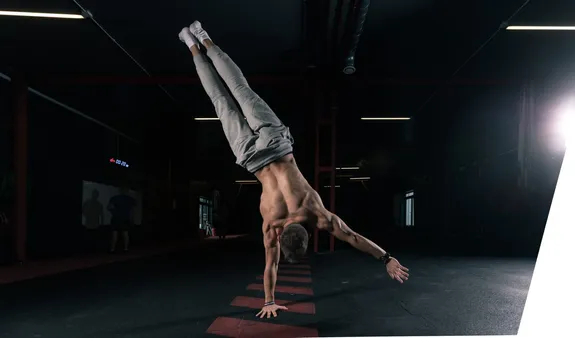
IV. Calisthenics Handstand Variations: Advanced Techniques and Challenges
One-Arm Handstand
The one-arm handstand is a challenging variation that requires immense strength and balance. It involves balancing on one arm while extending the other arm overhead. This variation targets the shoulders, core, and triceps.How to Do a Handstand
Planche Handstand
The planche handstand is an advanced variation that showcases impressive upper body strength. It involves holding a handstand position with the body extended into a straight line from head to heels. This variation engages the shoulders, chest, core, and triceps.
Straddle Handstand
The straddle handstand is a dynamic variation that involves balancing on the hands with the legs extended wide apart. This variation challenges the core, hip flexors, and adductors.
Tuck Handstand
The tuck handstand is a variation that emphasizes flexibility and core strength. It involves balancing on the hands while tucking the knees towards the chest. This variation stretches the hamstrings and improves core stability.
Free Handstand
The free handstand is a variation that eliminates the use of a wall or support. It requires exceptional balance and coordination to maintain the handstand position without any external assistance. This variation challenges the entire body and enhances overall athleticism.
Variation | Difficulty | Benefits |
|---|---|---|
One-Arm Handstand | Advanced | Strengthens shoulders, core, and triceps |
Planche Handstand | Advanced | Engages shoulders, chest, core, and triceps |
Straddle Handstand | Intermediate | Challenges core, hip flexors, and adductors |
Tuck Handstand | Intermediate | Stretches hamstrings and improves core stability |
Free Handstand | Advanced | Enhances balance, coordination, and overall athleticism |
- The calisthenics handstand is a versatile exercise that offers numerous benefits.
- It strengthens the upper body, improves core stability, and enhances flexibility.
- Advanced variations challenge balance, coordination, and overall athleticism.
Calisthenics Handstand Variations: Advanced Techniques and Challenges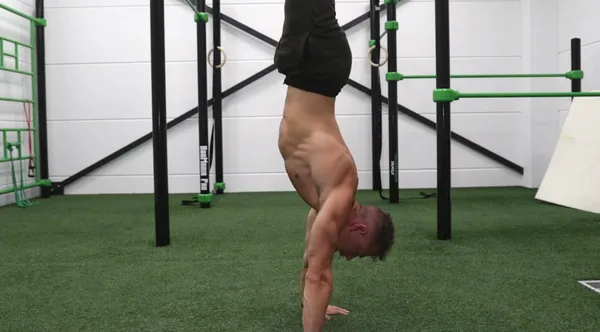
## Conclusion Calisthenics handstands are a great way to build strength, flexibility, and balance. They can also be a lot of fun to learn. If you're thinking about giving calisthenics handstands a try, be sure to start slowly and gradually increase the amount of time you spend upside down. With practice, you'll be able to hold a handstand for longer and longer periods of time. And remember, the most important thing is to have fun!